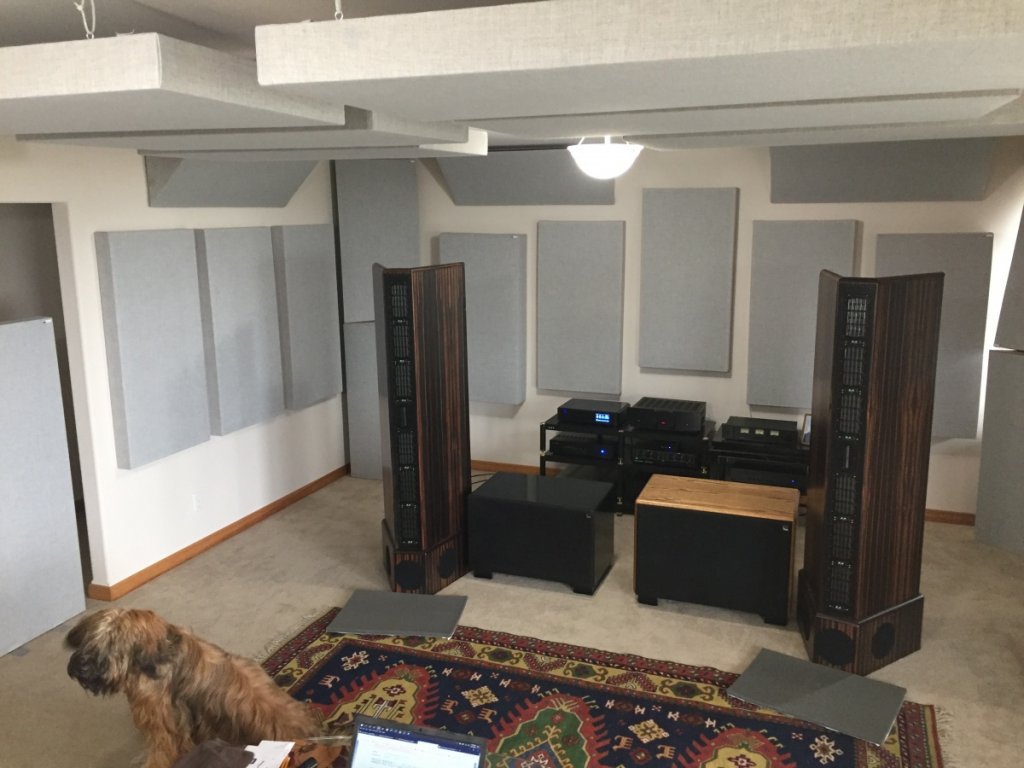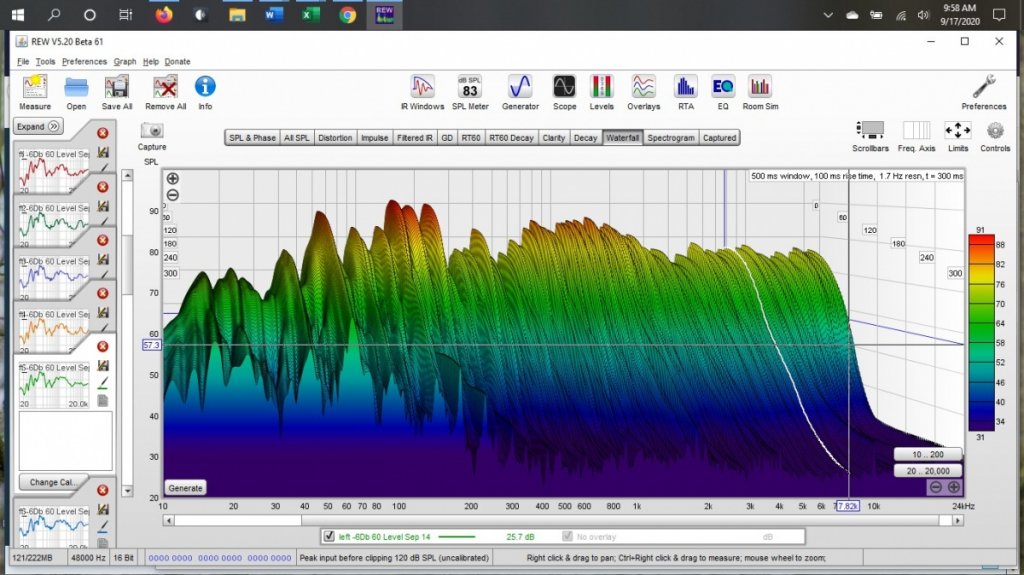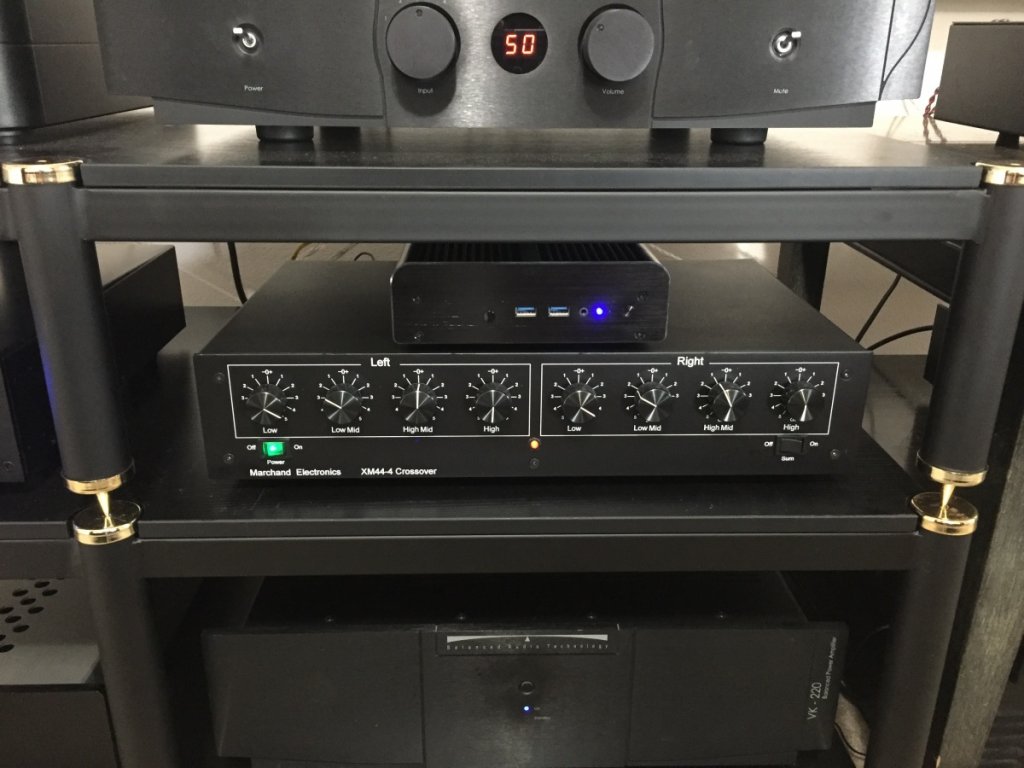Thought I would update this post
https://www.audiocircle.com/index.php?topic=171182.0, now what room is dialed in, active crossovers and provide listening impressions of the RM-V60.
Room is dialed in. Ideal coverage of 25% with good balance of bass traps and acoustic panels. Back half of room only has two panels so room stays alive. Proof is in the analysis of decay. Frequency response is pre-DSP, but still pretty close to “house curve”. Happy with room.


The Behringer DCX2496 is an excellent tool for dialing in crossover points. For my room and my ears my final crossover critical frequencies and slopes were 63Hz 24dB low pass for subs, 68Hz 24db and 233Hz 24dB slopes bandpass for mid-bass, 266 Hz 18dB for mid/treble, and treble passive crossover all the way to max position.
I found going active crossover in the digital domain less than satisfactory, the soundstage decreased in depth and width, and instruments would move around the soundstage depending on note being played, so piano is over there, now there, and there. The looks of the unit was also not my cup of tea. I went with a non-digital solution using Marchand Electronics active crossover. Really like how it sounds (or more accurately does not effect sound) and looks. Our very own John Casler happens to be a Marchand Electronics dealer. For those interested and on a budget this may be of interest.
https://www.youtube.com/watch?v=hrrUhfV1bSU&t=931s.

Long term impressions of the RM-V60. The biggest difference between this speaker and the VMPS “house sound” of the RM-30 and RM-40’s is transparency and soundstage. Transparency that you get from a bi-pole and wing is what makes this speaker different. Coming from a listening session with the RM-40 thinking “that is really good”, to this and thinking “oh...... so that is what transparency is”. The sound is layered deep and wide in the room, there are no aural clues that there are speakers in the room; hard to describe, but you know it when you hear it.
Quibbles and potential upgrades. IMO the soundstage is lower than I would like, like in male voice (Gregory Porter is not 4'10"). Likely due to mid-bass being just a few inches from the floor, that and floor direct reflection that close to the speaker is potentially less than ideal. Placed some sonic barrier I had laying around in front of speaker, and may work with this more. I plan to raise speakers off the floor 5 or 8 inches with blocks. If successful, I will build some wood blocks as pedestals under bases. I am also toying with the idea of tri-amping so I can crossover the mid-range and tweeters at 3.7K Hz so there will be no interaction between the mids and tweeters and the tweeters are used as tweeters vice super tweeters. This is more long-term and I would still have an interface for the ribbon tweeters with large capacitor (68uF) and voltage divider to protect against DC and startup spikes.
The RM-V60's are more than I thought they would be. This project motivated me to a dedicated two channel listening space and getting the sound as right to my ears as I can within all the limitations we work with, which continues. Really happy and enjoying this setup.